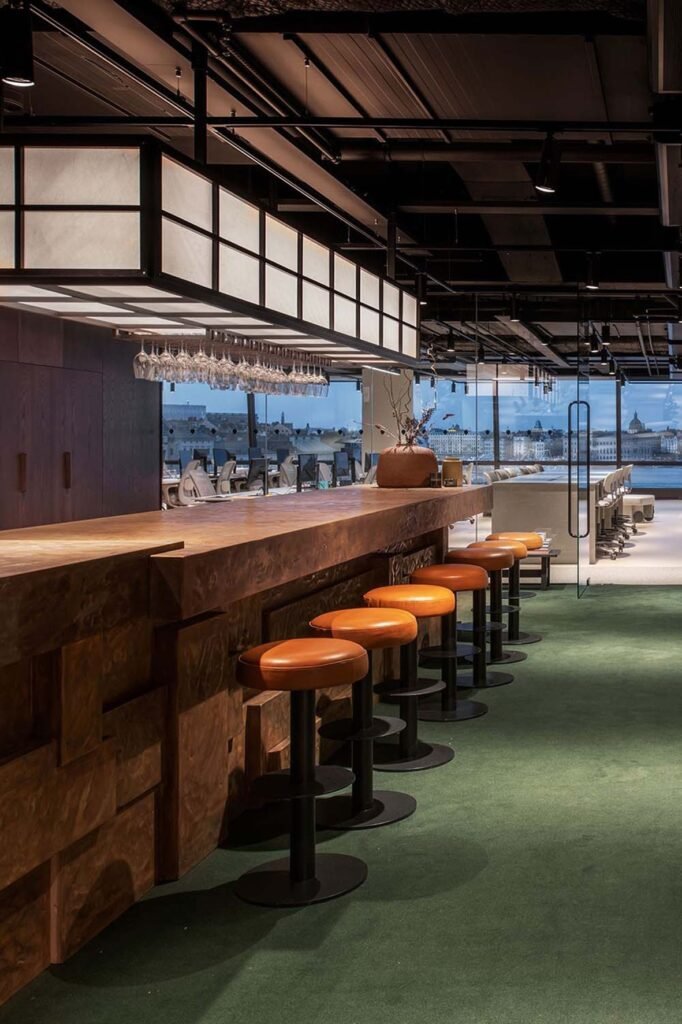For the needs of the recreational space of a Swedish company's offices in Stockholm, we were commissioned to construct a sculptural installation that functions as a buffet bar. The installation consists of a total of 11 pieces: 8 vertical cubic volumes defining the facade and 3 horizontal flat volumes shaping the functional surface of the counter. Additionally, 6 adjustable legs support the construction on the inner rear side. The length of the installation is 6m, while the depth ranges from 1m to 1.7m.



The ultimate goal was to create an irregular sculptural form in the final volumes, where their surfaces would evoke a sense of plasticity and a quality similar to aged, weathered metal surfaces made of copper sheet with indentations, textures, and oxidations. In order to achieve this, while minimizing construction costs, we decided to use an inexpensive, durable, and malleable material - birch plywood - which would be coated and thermally sprayed with copper finishes.
We developed detailed construction plans, thoroughly defining each component of the composition to ensure rigidity, and we carefully considered the assembly process. Throughout this procedure, we took into account the necessary technical characteristics of the construction, including support for vulnerable points, the ability to achieve a level surface, stability, and resistance to vibrations. It was also important to facilitate the transportation and installation of the structure by another team in Stockholm.



Subsequently, we created cutting drawings with nominal lists of the pieces and proceeded with production. All pieces were cut using our CNC router and assembled to shape the structural volumes of the composition. Every joint, inner edge, and connection point were covered with steel stock and, conversely, the outer edges were smoothed to enhance the plasticity of the construction. Using various electric and hand tools, we created subtle indentations as well as more pronounced micro-dents on the surfaces. Finally, all surfaces were meticulously sanded to achieve a uniform texture and prepare them for the final coating.
For the painting process, the volumes were sent to a specialized workshop. Finally, artificial oxidations were created through chemical interventions, and selective buffing was performed to create areas with varying levels of gloss or matte finish.



